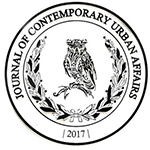
Journal of Contemporary Urban Affairs
ISSN 2475-6164 (online)
Before starting the submission process we recommend reviewing the journal's section policies, as well as the Manuscript Preparation Guidelines. Authors need to register with the journal prior to submitting or, if already registered, can simply log in and begin the five-step submission process.
Note: Submitted manuscripts need to be prepared according to the standards of the Journal Of Contemporary Urban Affairs. The manuscripts that are not adequately prepared will receive desc rejection.
Manuscript Submission Process
Manuscripts must be submitted online, with all steps handled digitally. Authors will be guided through the process of creating and uploading their files. This electronic submission process minimizes the time required for editorial processing, review, and publication.
Please submit your article via: Submission Link
To initiate the review process, authors should submit at least two files: a "cover letter" and a "manuscript file (anonymous)."
Note: Authors and co-authors must have an ORCID number to submit their manuscripts. Ensure your ORCID profile is updated so our editors can easily access your previously published work. You can obtain your ORCID number here.
As part of the submission process, authors must ensure their submission adheres to the following guidelines:
Note: To ensure originality, your article will be checked by CrossCheck. For more information, please refer to the CrossCheck Plagiarism Screening System.
Manuscript Structure: Your manuscript should include the following sections:
Additionally, include sections for Acknowledgements, Funding, Conflict of Interests, Ethics Statements, and CRediT Authorship Contribution Statements.
Literature Citations: Manuscripts should properly acknowledge relevant literature. Manuscripts lacking appropriate citations of recent relevant references may be desk-rejected.
Language Clarity: The manuscript must be clear and comprehensible to a global audience. It is recommended that a native English speaker who is a professional in urbanism proofreads your manuscript.
Content Relevance: The manuscript must align with the title and the journal's stated scope.
Grant Support: If applicable, include acknowledgments for the source of funding.
Article Subdivision: Divide your article into clearly defined and numbered sections. Subsections should be numbered 1, 2 (then 1.1, 1.1.1, 1.1.2), 1.2, etc. The abstract is not included in section numbering.
In-text Citations: Ensure every reference cited in the text is also present in the reference list and vice versa. Avoid citations in the abstract. Unpublished results and personal communications should be mentioned in the text but not included in the reference list. Citing a reference as 'in press' implies it has been accepted for publication.
Reference List: References should be arranged alphabetically and then chronologically if necessary.
Reference Style: All manuscripts should use the American Psychological Association (APA) citation style (7th edition). Ensure all articles have DOI numbers or are scientific books relevant to your manuscript's title. Use up-to-date references (preferably after 2000) and avoid relying on unofficial internet sources or URLs.
Note: Make sure to use Endnote (see how), Mendeley (see how) or Microsoft Word Referencing Program (see how) in APA style.
Formatting: Manuscripts should be in Microsoft Word format, A4 size, Times New Roman, 12-point font for the abstract and keywords, and 12-point for the text. The complete manuscript should be a maximum of 8,000 words, including references, tables, figures, and appendices.
Use italic font for emphasis, quotes, or sentences.
Note: Manuscripts not adhering to these guidelines will be desk-rejected.
» Title
» Abstract
» Keywords
» Introduction
» Materials and Methods
» Results
» Discussions
» Conclusions
» Acknowledgements
» Funding
» Conflict of interests
» Data availability statement
» CRedit author statement
» Appendices
Title: The manuscript title should be concise and informative, reflecting the manuscript's originality and relevance to the journal's scope. It should be no longer than 15 words, clearly presenting the uniqueness and contribution of the work without using abbreviations or acronyms. An effective title should: convey the main topics of the study, highlight the importance of the research, be concise, and attract readers.
Abstract: The abstract should summarize, in one paragraph of 200 words or less, the major aspects of the entire paper in a specific sequence that includes:
The abstract should not include:
Techniques for Writing an Abstract:
Keywords: Keywords capture the essence of your paper, making it searchable and increasing citations. Include 4-6 relevant keywords that consist of two or three words each. Avoid single-word keywords to reduce false matches. Ensure all acronyms and abbreviations are fully spelled out.
Highlights: Highlights summarize the novel results and new methods used in the study, if any. Each bullet point should be informative, concise (75 characters or fewer), and free of jargon, acronyms, or abbreviations.
Examples:
Important Note: From volume 7 number 1 onward, authors are required to provide "Highlights" for their submitted articles.
Contribution to the Field Statement (originality/value/findings): Authors should briefly summarize (in 50 words) the manuscript’s contribution to the existing literature. The statement should highlight new knowledge and research findings, demonstrating how the journal makes a unique contribution compared to existing research. It should be written in a way that non-experts can understand, avoiding technical language and non-standard acronyms.
Examples:
Important Note: From volume 7 number 1 onward, authors are required to provide a "Contribution to the Field Statement" for their submitted articles.
Introduction: In the introduction, avoid a detailed literature review or a summary of the results. Instead, provide readers with:
Note: Although the introduction is the first main section, it is often helpful to finalize it after completing the rest of the paper to ensure it aligns with the overall structure and findings.
Materials and Methods: Provide enough detail to allow the work to be replicated. If methods are already published, refer to them and describe only relevant modifications.
Results: Present your results clearly and concisely.
Discussions: This section should explore the significance of the results without merely repeating them. Often, a combined Results and Discussion section is appropriate. Avoid extensive citations and discussions of published literature. This section should analyze the data and relate them to other studies, addressing:
Avoid redundancy between the Results and Discussion sections. Conclude with a summary of the principal points.
Conclusions: Present the main conclusions of the study in a short Conclusions section, either standalone or as a subsection of the Discussion. Follow these general rules:
Acknowledgements: Include a separate Acknowledgements section before the references, listing individuals who provided help during the research.
Funding: Provide a funding statement to indicate any financial support for the work. If no funding was received, state: "This research did not receive any specific grant from funding agencies in the public, commercial, or not-for-profit sectors." If funding was received, provide details, e.g., "This work was supported by the National Natural Science Foundation of China [grant number XXXXXXX]."
CRediT Author Statement: For transparency, submit an author statement outlining individual contributions using the relevant CRediT roles, such as Conceptualization, Data curation, Formal analysis, Funding acquisition, etc. See More details and example
Conflict of Interests: Declare any potential conflicts of interest. If none exist, state: "The Author(s) declare(s) that there is no conflict of interest."
Data Availability Statement: Indicate whether data is available, and if so, where and how it can be accessed. For more information on how to prepare “Data Availability Statement” for your article please click here
Appendices: Identify multiple appendices as A, B, etc. Number formulas and equations separately within each appendix. Tables and figures should follow a similar format.
Footnotes and Abbreviations: Avoid footnotes and abbreviations. If necessary, footnotes should contain additional text only, not source information. Abbreviations in tables and figures should be explained.
If you have received revision (Minor or Major) from a journal it means that you have convinced the editors and reviewers that your article has an original contribution to the literature. During the process of revision which sometimes might be stressful, you should develop a strategy to completely understand each comment which is given by the reviewers and/or editors. Considering this fact, the main reason that you receive revision is that the reviewers would like to see how and in what way you are revisioning your article. They want to see your academic knowledge, ability and professionality in the process of revision. One of these abilities is how much you can perceive different perspectives of one single concern of a reviewer and/or how you will be able to apply given comments in the different parts of your manuscript. If the reviewers realized that the response to the reviewers is not appropriate or they were not satisfied with the quality of your work in a given time they may reject your manuscript.
a-Rebuttal Letter: The rebuttal letter is an author's chance to directly reply to the reviewers, announce plans to improve the work, clear up misunderstandings or defend aspects of the work. Generally written by the corresponding author, your Rebuttal letter should include your manuscript details and a brief statement to note the resubmission. Please see the template from here
b- Author's Response to Reviewers and Editor Comments: In this file, it is required to describe, explain and justify your responses to the editor’s and reviewers' comments. See the template from: here
c- Track changes document: Return your revised manuscript with your revisions highlighted. Use a tool like Microsoft Word’s “track changes” feature. Please see the template from here
d- Clean version: Submit a “clean” version of your manuscript to show your work in its final form. This file is usually uploaded as the “manuscript” file and allows the editor to read your work without the distraction of marked-up detail, ensuring that it is ready for production.
What the author should do during the revising?
Do’s:
What the author shouldn’t do during the revising?
Don’ts:
For more information please see:
a) How to respond to reviewers’ comments: A practical guide for authors, by Cristina N. from here
b) How to respond to reviewer comments – the CALM way, by Catherine Carnovale from: here
c) How to write an effective “Response to Reviewers” letter, by Jeff Offutt from: here
All manuscripts should adhere to the American Psychological Association (APA) citation style, which is predominantly used in the social sciences. The latest edition of the APA Publication Manual should be referenced while preparing manuscripts.

Haruna, P. B., Zubairu, S., Olagunju, R. E., & Akande, O. K. (2023). Liveability Considerations: Towards Designing Sustainable Public Housing in Niger State, Nigeria. Journal of Contemporary Urban Affairs, 7(2), 262–278. https://doi.org/10.25034/ijcua.2023.v7n2-16

Smith, T. (2020). The citation manual for students: A quick guide (2nd ed.). Wiley. https://doi.org/10.1000/182
Author, A. A., & Author, B, B. (2020).Title of the chapter. In E. E. Editor & F. F. Editor (Eds.), Title of the book (2nd ed., pp. 123-213). Publisher Name. https://doi.org/10.xxxx/xxx

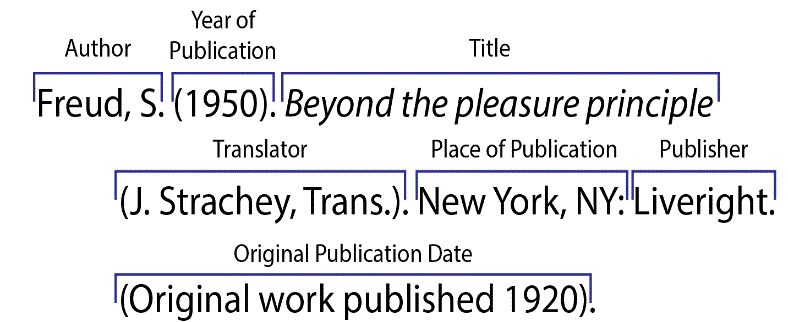

Doe, J. (2024). Exploring the intricacies of human behavior [Review of the book The Psychology of Development, by R. Green]. Psychological Review, 135(4), 145-150.
Taylor, R., & Lee, P. (2019). Unraveling cognitive mysteries [Review of the book Cognitive Pathways, by L. Johnson]. Journal of Cognitive Science, 122, 130-138.
Smith, J. A. (2022). Urban planning and its impact on public health [Doctoral dissertation, Metro University]. Digital Thesis Repository. www.digitalthesisrepository.com
Williams, K. (2019). Education's role in economic advancement [Master’s thesis, National University]. National University Repository. https://nationaluniversity.edu/thesis/2019
Brown, A. A. (2021). Renewable energy advancements [Unpublished doctoral dissertation]. Greenfield University.
Garcia, M. (2018). The influence of culture on learning outcomes [Unpublished master's thesis]. Global University.
Martin, P., & Davis, R. (2023, July 10-13). New methodologies in urban design [Paper presentation]. Global Symposium on Urban Development, New York, NY. https://doi.org/10.1234/gsud.2023.7890
Clark, S. (2023). Future trends in digital learning. In J. White & M. Black (Eds.), Proceedings of the Educational Technology Conference (pp. 95-110). EdTech Publications. https://doi.org/10.5678/etc.2023.456
Harris, L. A., & Jones, T. B. (2022). Advances in artificial intelligence. Journal of AI Research, 17(2), 201-218. https://doi.org/10.8765/jair.2022.007
Roberts, J., & Lee, H. (2002, March 15-18). Innovations in virtual reality. Paper presented at the International Symposium on Virtual Environments. Abstract retrieved June 10, 2002, from http://www.virtualsymposium.com/papers/innovations
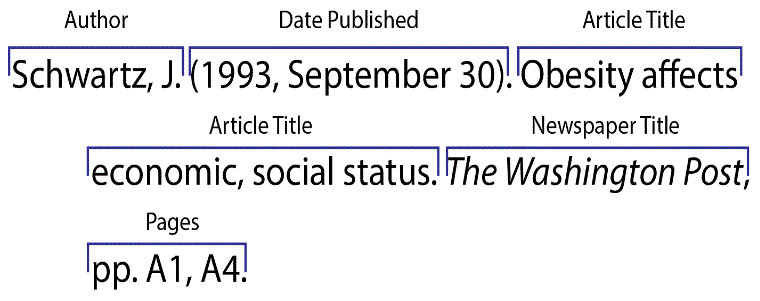



Format: Author, A. (Year). Title of the software [Type of resource]. Retrieved from URL
Example: Wilson, P. (2011). Advanced statistical analysis software [Computer software and manual]. Retrieved April 12, 2013, from http://www.statssoftware.com/analysis
Format: Organization. (Year). Title of the data [Data file]. Available from URL
Example: World Health Organization. (2021). Global health statistics [Data file]. Available from the WHO website, http://www.who.int/data
Format: Author, A. (Year). Title of the slides [PowerPoint slides]. Retrieved from URL
Example: Lee, J. (2023). Fundamentals of AI [PowerPoint slides]. Online Education Portal. https://www.onlineeducation.com/ai_fundamentals
Format: Author, A. (Year). Title of the report. Publisher.
Example: United Nations. (2022). Annual report on global development. New York: Author.
Format: Title of the article. (Year, Month Day). Title of Newspaper, volume(issue), page numbers.
Example: Healthcare advancements. (1983, August/September). Health Insights, 4, 1-2.
Format: Author, A. (Year, Month Day). Title of the press release [Press release]. Retrieved from URL
Example: Williams, K. (2023, October 5). Breakthroughs in renewable energy [Press Release]. www.renewablenews.com
American Psychological Association. (2018, January 31). Dishonest individuals perceived as less capable [Press release]. http://www.apa.org/news/press/dishonest-individuals.aspx
Format: Author, A. (Year, Month Day). Title of the blog post. Blog Name. Retrieved from URL
Example: Brown, L. (2023, March 10). Raising awareness for mental health. Health Blog. https://healthblog.com/mental-health-awareness
Format: Author, A. [@Username]. (Year, Month Day). First 20 words of tweet [Tweet]. Twitter. URL
Example: Smith, J. [@JaneSmith]. (2023, April 15). Excited to announce my new research on sustainable living! [Tweet]. Twitter. https://twitter.com/JaneSmith/status/1234567890
Format: Host, A. (Host). (Year). Title of the podcast [Type of podcast]. Retrieved from URL
Example: Davis, M. (Host). (2023). Tech innovations today [Audio podcast]. Tech Talks. https://techtalkspodcast.com/innovations
Format: Producer, A. (Producer), & Director, A. (Director). (Year). Title of the movie [Motion picture]. Production Company.
Example: Rogers, T. (Producer), & Lee, M. (Director). (2022). Journey into the unknown [Motion picture]. Discovery Films.
Format: Author, A. (Year, Month Day). Title of the video [Video]. Retrieved from URL
Example: Clark, R. (2023, May 22). Discovering the ocean depths [Video]. Retrieved from https://www.youtube.com/watch?v=abcdefgh
Format: Author, A. (Year). Title of the entry. In B. Editor (Ed.), Title of the reference work (pp. pages). Publisher.
Example: Miller, J. (2023). Emotional development. In K. Green, P. Brown, & L. Black (Eds.), Encyclopedia of Psychology (pp. 50-53). Knowledge Press.
Format: Organization. (Year, Month). Title of the report (Report No. xxx). Publisher.
Example: Economic Research Institute. (2021, March). Economic outlook report (Report No. 123). Washington, DC: Author.
Format: Author, A. (Year). Title of the article [Electronic version]. Journal Name, volume(issue), pages. Retrieved from URL
Example: Johnson, K., Brown, L., & Doe, J. (2005). Social media's impact on communication [Electronic version]. Journal of Communication Studies, 7, 89-101.
Johnson, K., Brown, L., & Doe, J. (2010). Social networks in modern communication [Electronic version]. Journal of Communication Studies, 8, 202-215. Retrieved July 10, 2011, from http://communicationstudies.org/articles.html
Format: Title of the survey. (Year). Retrieved Month Day, Year, from URL
Example: 7th Annual User Survey. (2020). Retrieved August 1, 2020, from http://www.usersurvey.com/2020
Format: Author, A. (Year). Title of the software (Version) [Computer software]. Location: Company.
Example: Taylor, M. E. (2015). Data Pro Analyzer (Version 3.2) [Computer software]. New York, NY: Data Solutions Inc.
Note: You may use the following templates of references in APA style prepared by Victoria University. https://libraryguides.vu.edu.au/apa-referencing/7JournalArticles
Number of authors to include in in-text citations:
The format of the author part of the in-text citation varies depending on how many authors are attributed to the work and the citation style.
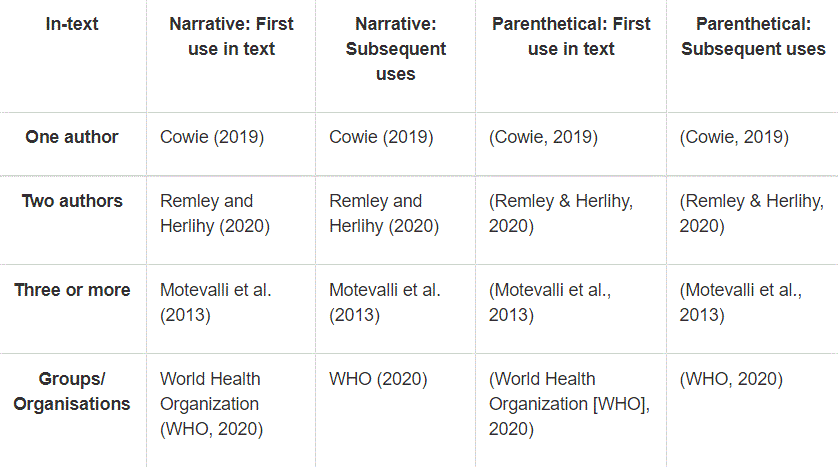
Works with the Same Author and Same Date:
When multiple references share the same author(s) and publication date, include a lowercase letter after the year. This year-letter combination is used in both the in-text citation and the reference list.
In-text: Brown (2022a) or (Brown, 2022a)
Brown (2022b) or (Brown, 2022b)
Reference list: Brown, A. L. (2022a). Advances in renewable energy systems. Journal of Environmental Science, 34(2), 123-140. https://doi.org/10.1234/jes.2022.00123
Brown, A. L. (2022b). Challenges in urban planning. Urban Studies, 45(4), 567-582. https://doi.org/10.1234/us.2022.00456
Citing References in the Text:
Ensure that every reference cited in the text is also present in the reference list (and vice versa). Any references cited in the abstract must be given in full. Citing a reference as ‘in press’ implies that the item has been accepted for publication.
Two Authors: When a work has two authors, always include both names, the year, and use the conjunction “&” between the surnames of the authors.
Example: Smith and Jones (2005) demonstrated ...
As shown by (Doe & White, 2008) ...
Three, Four, or Five Authors: When a work has three, four, or five authors, include all names the first time, and then use the first author's surname followed by "et al." for subsequent citations.
First time: Johnson, P., Lee, M., & Carter, D. (2010) found ...
Second time: Johnson et al. (2010) found ...
No Author: When a work has no author, cite the organization or institution that issued the work. Use an abbreviation for long names if needed.
First time: (World Health Organization [WHO], 2015) ...
Second time: (WHO, 2015) ...
Anonymous Work: If the work is labeled as anonymous, indicate it in a bracket.
(Anonymous, 2020).
Same Last Name Authors: If there are two authors with the same last name, include the initials to avoid confusion.
Multiple References by the Same Author: When citing multiple references by the same author(s), list the years of publication separated by commas.
Past research (Williams, 2003, 2005, 2007) ...
Same Author, Same Year: When the same author has multiple works in the same year, label the sources with letters (a, b, c, etc.).
Several studies (Miller, 2010a, 2010b) ...
Multiple Authors in One Citation: When citing works by different authors in the same citation, list them in the same brackets separated by semicolons.
Several studies (Green, 1998; Black, 2001; White & Blue, 2005) ...
Citing Secondary Sources: When quoting hearsay, cite the original author and year of the work, followed by "as cited in" and the secondary source.
Deci (1975; as cited in Ryan, 2001, p. 108) ...
Original and Translation Publication Years: When a work has an original publication year and a translation year, list both years separated by a slash.
(James, 1890/1983)
Internet Source without Bookmarked Page: For an Internet source without a bookmarked page, use paragraph numbers.
(Myers, 2000, para. 5)
Personal Communication: Personal communication should be cited in text with the date and not included in the reference list.
Deci (personal communication, April 18, 2001) ...
Important Note:
Non-Latin scripts cannot be used in the reference list. The title must be transliterated into English, with the original title in Latin script and the translation in brackets.
Example: Chen, L. (2005). 水资源管理 [Water resource management]. Beijing: Science Press.

Referencing Tables and Figures in the Text:
Number all tables and figures that are part of the main text. Refer to them by their assigned numbers in the text. Avoid phrases like "the table above" or "the figure on page 12".
In-text: James et al. (2020, Table 2) demonstrate the impact of social media on teenage behavior...
As indicated in Table 2, regions A and B have high levels of air pollution...
Figure 3 illustrates the trend in smartphone usage over the last decade...
...according to the data (see Table 4).
...following a detailed analysis (see Figures 6 and 7).
Referencing Images Without Displaying Them in the Text:
When discussing an image that is not included in the text, reference it as you would any typical source, including the author, date of publication, and page numbers where applicable. Provide a full reference list entry in the appropriate format for the source (book, website, etc.).
In-text: The theme of industrial revolution is vividly depicted in The Ironworkers Noontime (Jones, 2015, p. 78), a notable realist painting.
Direct Quotes in APA Style:
A direct quote is a piece of text copied exactly from a source. You may quote a word, phrase, sentence, or passage.
Examples: According to a recent study, “quotes can enhance the clarity of academic writing” (Doe et al., 2021, p. 45).
Smith and Nguyen (2019) assert that “academic dishonesty is often a result of misunderstanding rather than intentional fraud” (p. 9).
Citing Indirect Sources:
When referring to a source found within another source, always try to access the original. If the original source is not available, cite it through the secondary source using "as cited in".
Examples: (Taylor, 1985, as cited in Roberts et al., 2019)
If the primary source’s publication date is unknown, only include the secondary source's publication year.
Example: Clark (as cited in Evans, 2018) argues that...
Include a reference entry only for the secondary source, not the primary source.
Author Roles in APA References:
If contributors have roles other than “author,” sometimes (but not always) include a description of their role in parentheses. Refer to the table below for guidance on when to provide a role description.
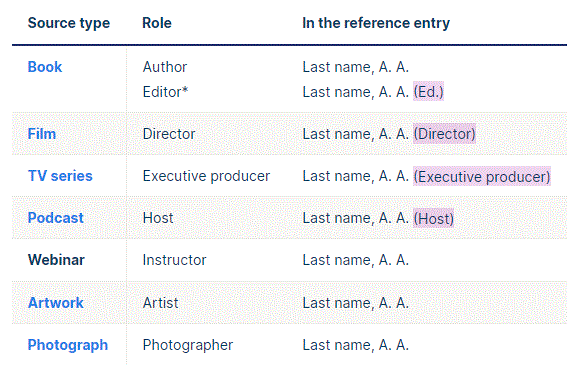
* Abbreviate the editor role to “Ed.” (one editor) or “Eds.” (multiple editors).
Abbreviations in APA references:
To save space in the reference entry, some common parts of works are abbreviated. Pay attention to the differences in capitalization and punctuation.
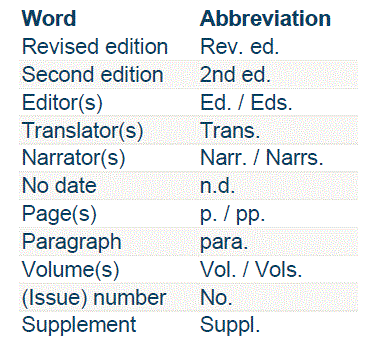
The easiest way to cite references is to use effective reference management software such as:
These management software tools have plug-ins for word processing programs, allowing authors to select the appropriate journal template when preparing their articles. The list of references and citations will be formatted according to the journal style described in this guide. If no template is available, refer to the list of sample references and citations provided in this guide to format them according to the journal style.
Ensure your manuscript is written in clear and proper English, adhering to either American or British conventions, but not mixing the two. Authors who believe their manuscript may need corrections for grammar, spelling, or scientific language can utilize available English Language Editing services. If an editorial board member of the Journal of Contemporary Urban Affairs identifies the need for editing during or after the review process, the author must seek assistance from a native English speaker or a professional editing service to proofread the article.
Note: Editing should be done using Microsoft Word. Ask your proofreader to enable "Track Changes" during the proofreading process. Authors should submit the final edited version of the Word file along with another Word file that shows the tracked changes.
Note: All articles must be proofread before publication.
A PDF of the final version will be provided, and authors are required to either approve it or promptly report any errors. We will make every effort to ensure your article is published swiftly and accurately. It is important to review the document thoroughly before responding, as we cannot guarantee the inclusion of any corrections submitted later.
Journal of Contemporary Urban Affairs
ISSN 2475-6164 (online)
Contact: Publisher / Editorial Office of the Journal
Publisher: Alanya Üniversitesi, https://www.alanyauniversity.edu.tr/
Editor-in-Chief: Dr. Hourakhsh Ahmad Nia, Alanya University
Follow us on: Facebook / Twitter / Instagram / LinkedIn
This journal is published through an Open Journal System as part of the Public Knowledge Project (PKP).
This journal is licensed under a Creative Commons Attribution 4.0 International (CC BY) license.
![]()